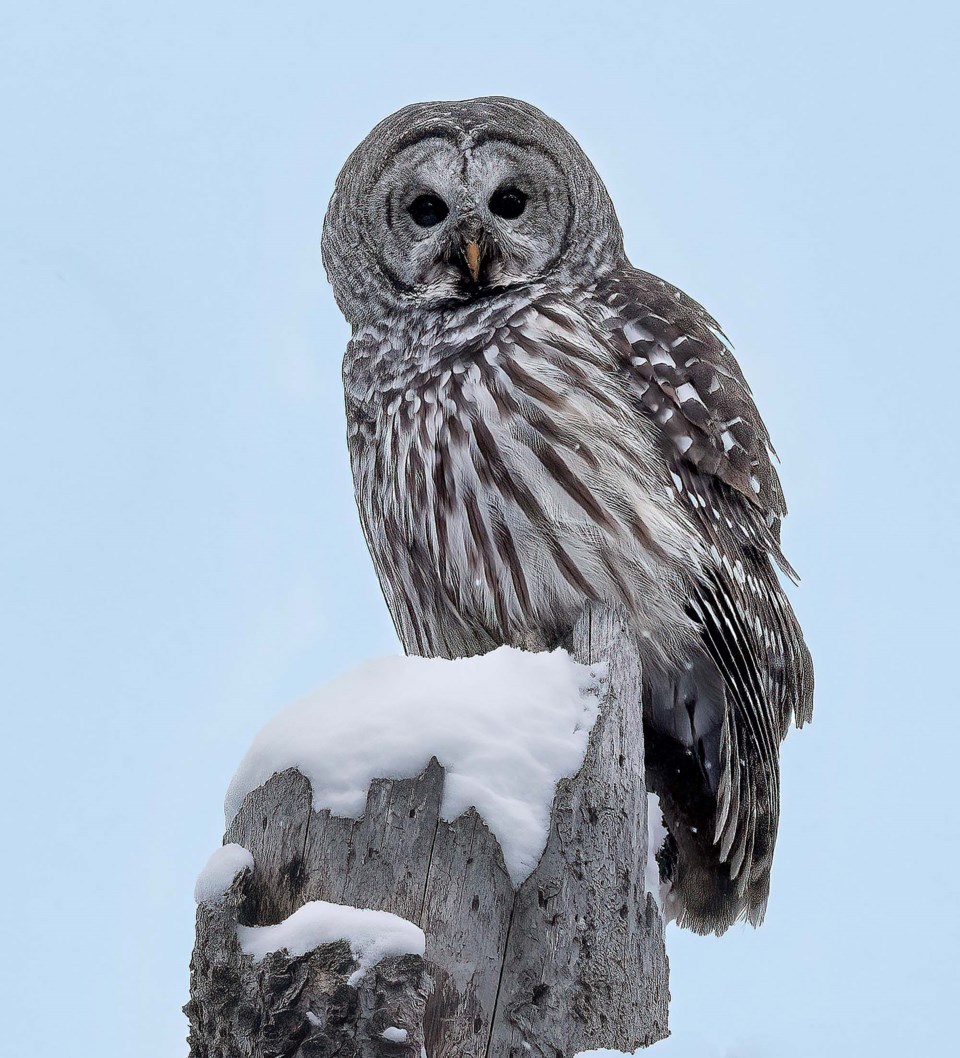A barred owl has winged its way into the St. Albert Christmas Bird Count for the first time in history.
Count co-ordinator James Fox published the results of the 2022 St. Albert Christmas Bird Count on Jan. 3, 2023. This annual citizen science event saw amateur ornithologists roam the backwoods and backyards of St. Albert on Dec. 27, 2022, to try and count every bird they could find.
This year’s count happened on a cold, humid day heavy with hoarfrost, said count participant Alan Hingston. Just 54 people participated — an all-time low for the count.
Just one owl
Counters identified 4,355 birds in the count, about 51 per cent of which were bohemian waxwings.
New to this year’s count was the barred owl, a single specimen of which was spotted by Percy Zalasky and Bob Bowhay near the Sturgeon River. (Zalasky chose not to disclose the bird’s exact location, as owls were very sensitive to human activity.)
Zalasky said he and Bowhay saw a barred owl with two chicks in that area earlier this year, and heard that Hingston had challenged for counters to spot this species on count day. After 10 km of exploration, the two of them saw the bird flush from the underbrush and alight on a dead tree.
“It was nice to get it finally on a Christmas Bird Count,” Zalasky said.
Barred owls have mottled brown and white coats and brown-on-white bars on their chests, reports the Cornell Lab of Ornithology. They have a distinct nocturnal call which ornithologists say sounds like, “Who cooks for you? Who cooks for you all?”
“It’s a beautiful bird to see and you don’t see it that often,” Zalasky said, and the only owl in St. Albert with all-black eyes (the rest have yellow ones).
Zalasky said St. Albert residents were unlikely to see barred owls in urban areas, as they lived in big holes in trees in thick deciduous forests.
The barred owl was the only owl spotted in this year’s count — unusual, in that the count usually includes at least one snowy or great horned owl.
Zalasky and Hingston said the lack of owls could be due to foggy conditions and the smaller turnout. A shift from grain crops to canola around St. Albert in the last 20 years may also have made this region less attractive to mice and the owls that eat them.
Counters spotted 229 black-billed magpies on Dec. 27, which was the second-smallest number in count history. Hingston said frosty conditions may have encouraged magpies to hunker down on branches, which would have made them more difficult for people to spot.
Count data suggests an apparent rise in northern flicker and pileated woodpecker numbers since 1991. Hingston said this could be the result of increased use of bird feeders in the last 20 years combined with the spectacular nature of these birds; feeder watchers were much more likely to report a big woodpecker at their feeder than, say, a sparrow.
Snow buntings made a big comeback in this year’s count, with 490 spotted compared to about 75 in the previous five years combined. Hingston said this spike was due to this bird’s tendency to move in huge flocks; if you spot one, you will probably spot hundreds more nearby.
Data from the count has been sent to Birds Canada to track trends in bird populations. Count results can be found at tabsoft.co/3iw0JLI.




